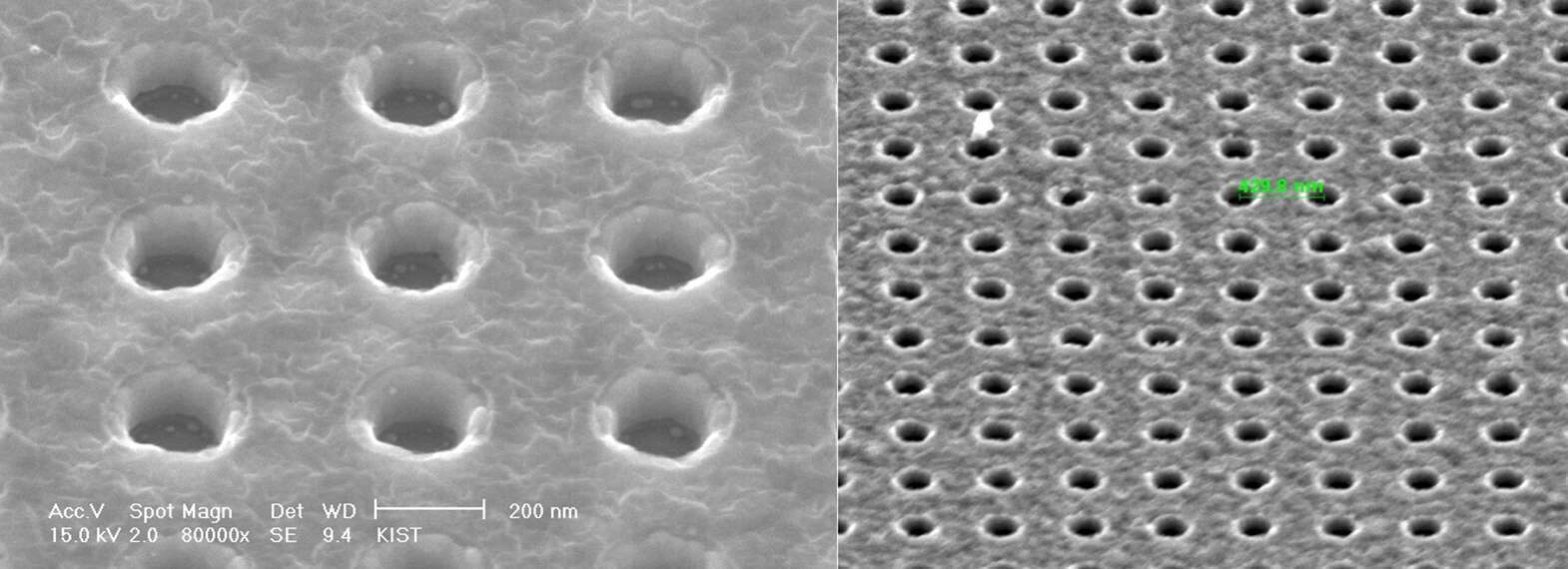
Near Infra-Red Spectrum Regional Color Filter Development using a Single Metal Layer of Nanohole Arrays
Many research about nano hole array typed color filter using extraordinary optical transmission(EOT) phenomenon has been performed for the recent years. We introduce three channels filter for the near infra-red spectrum region. Each center peak of the filter specturm is 950nm, 850nm, and 750nm respectively, These regional filter also can be applied to CMOS image sensor for the night vision.
Numerous Finite Difference Time Domain (FDTD) calculations were performed by automated performance to search proper structural dimension conditions (i.e a layer material, hole shape, depth, diameter, period, existence of the adhesion & cover layer) which are satisfied with not only the best filter property but also easiness of the fabrication process. Through these FDTD simulation results, we choosed cylinderical nanohole arrays in a single silver metal layer.
Designed arrays were fabricated by Electron Beam Lithography (EBL) mainly, also etching and descum process. One of the distinguished differences from the conventional fabrication methods is not to use the adhesion layer between substrate and silver metal layer, because existence of adhesion layer has negative effect on the filter property.
In conclusion, this result shows that evaluated transmission properties of this fabricated filter are well-matched to expected FDTD simulation results. We present how to find successful fabrication variables (i.e. E-beam dose current, kind of resist etching gas, gas, etcing time, pressure, temperature, descum methods and so on) through numerous attempts and failures, especially mension removing Electron beam Resist(ER). And also present how to evaluate the transmissition property of fabricated filter samples using CMOS image sensor and monochromator.

Fig1. The silver metal surface of cylinderical nano hole array structure after etching process, prior to the deposition of SiO2 cover layer (Designed for NIR filter whose resonance wavelengh is 850nm)
Powered by Eventact EMS